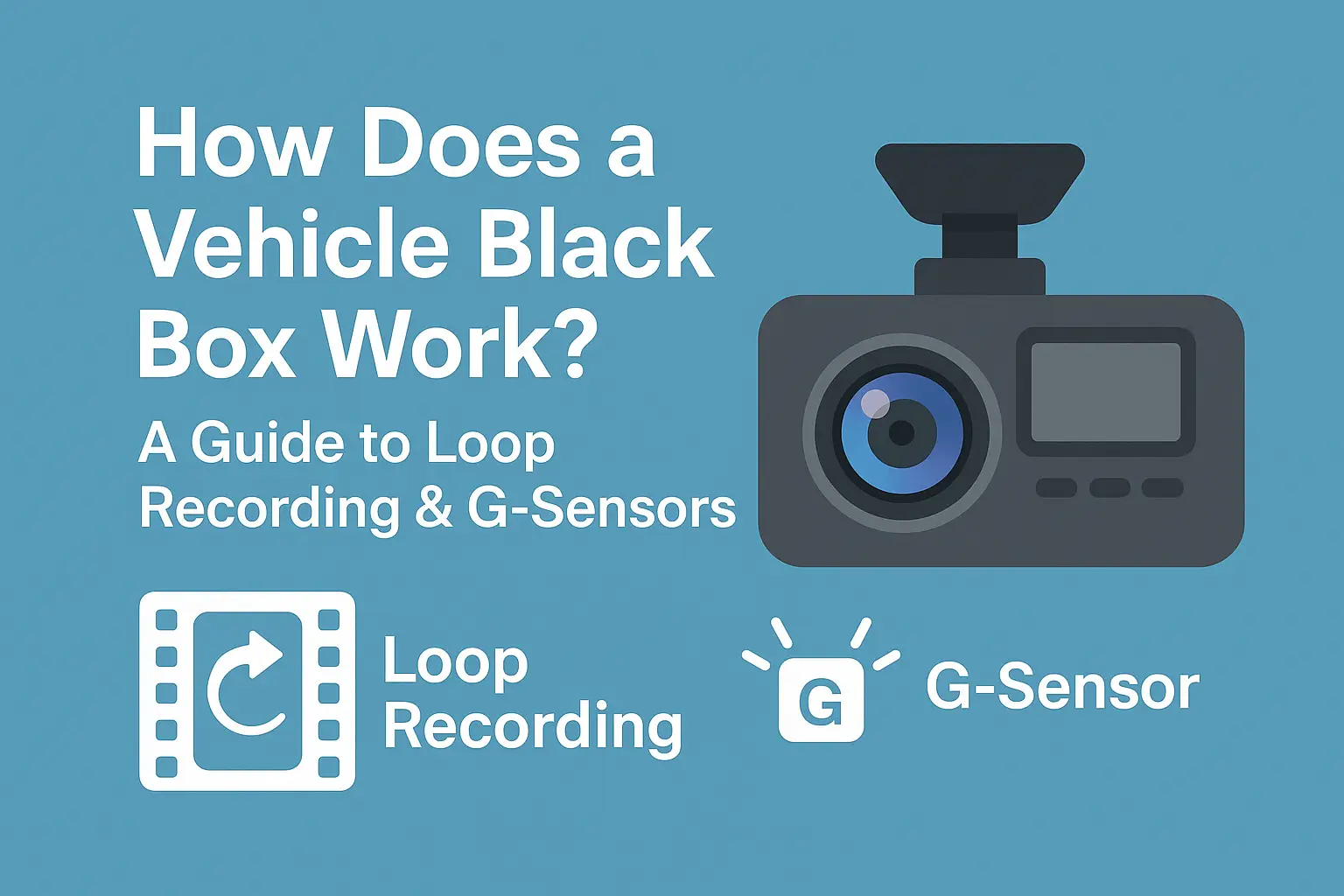Worried your dash cam will run out of space before an accident happens? You might miss crucial footage if the memory card is full, but a black box uses smart technology to solve this.
A vehicle black box, or dash cam, works by continuously recording video onto a memory card. It uses loop recording to overwrite old, non-essential files and a G-sensor to detect impacts, locking the current video file to prevent it from being erased. This ensures crucial incident footage is always saved.
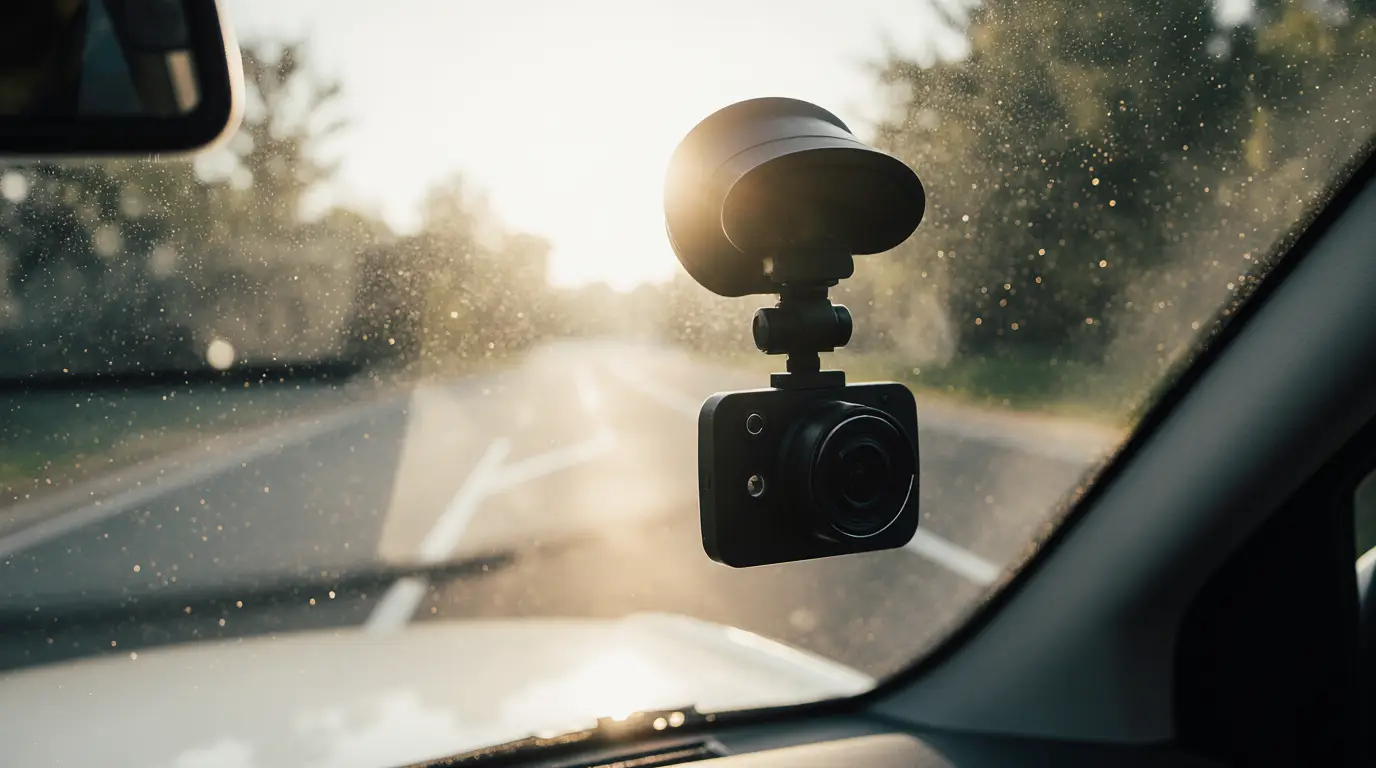
This technology might sound straightforward, but how these systems work together is quite clever. As someone who has dedicated their career to automotive safety technology1, I've always been fascinated by the simple reliability of these core functions. They have to work perfectly every time. Let's break down exactly how these components keep you protected on the road. It's a system designed for a specific, vital purpose, and understanding it helps you trust the device.
How Does Loop Recording Prevent You From Running Out of Storage?
Constantly checking and swapping full memory cards is a real hassle. It is also easy to forget, which could leave you without video evidence right when you need it most. Loop recording automates this entire process.
Loop recording works by saving video in short segments, typically 1, 3, or 5 minutes long. When the memory card fills up, the system automatically deletes the oldest unlocked video segment to make room for the newest one. This creates a continuous, rolling loop of footage without any manual work.
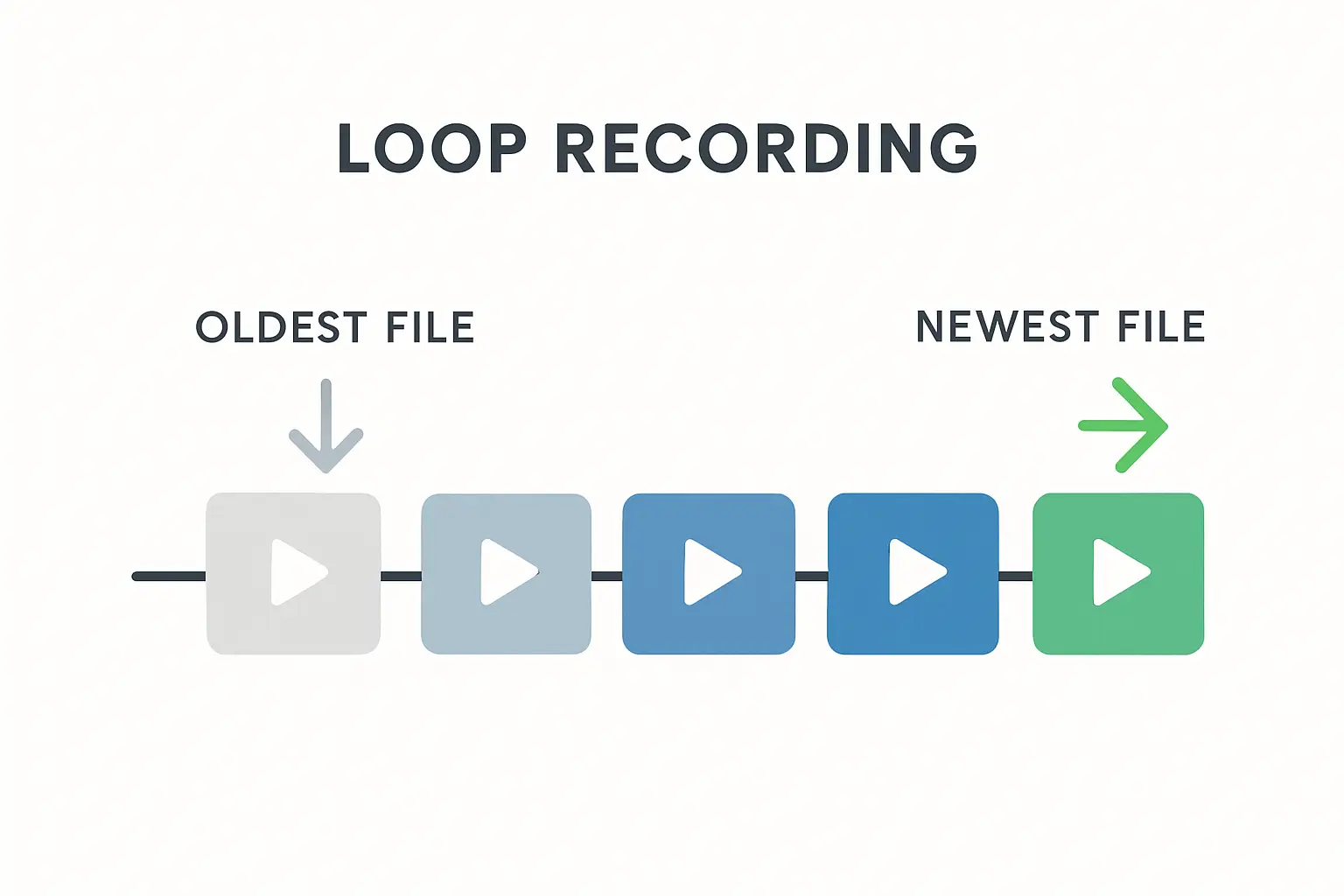
To really appreciate this, you have to understand how the system manages data. It's not just one long video file. Instead, every piece of footage is a separate, small file. This design is very intentional and critical for system stability.
The Mechanics of Looping
The camera doesn't just record until the card is full and then stop. It records a short clip, saves it, and immediately starts a new one. I remember working on an early prototype where a power failure during a long recording corrupted the entire file. By breaking the recording into small segments, the system ensures that even if power is suddenly cut, only the current, unsaved segment is at risk. All previous segments are already safely stored on the card. This segmentation is the foundation of a reliable black box system.
Choosing Your Segment Length
The length of these video segments2 is often a user-selectable setting. Choosing the right one is a matter of balancing context with file management. A longer segment, like 5 minutes, captures more of the events leading up to an incident. However, a shorter 1-minute segment means less irrelevant footage is saved when a file is locked by the G-sensor. I personally find that a 3-minute segment is the sweet spot for most driving conditions.
| Segment Length | Pros | Cons |
|---|---|---|
| 1 Minute | Small file size, less irrelevant footage per event. | May not capture enough context before an event. |
| 3 Minutes | Good balance of context and manageable file size. | A good default setting for most users. |
| 5 Minutes | Captures a wider timeframe around an incident. | Larger files, more irrelevant footage saved in a locked event. |
What Makes the G-Sensor the Most Critical Part for Saving Evidence?
A collision happens in a split second. In the stress and confusion of that moment, your first thought is not going to be about saving a video file. The G-sensor acts as your silent witness, doing this automatically.
The G-sensor, also known as an accelerometer, detects sudden or unusual changes in motion, such as hard braking, sharp turns, or an impact. When it senses a force that goes over a set level, it immediately tells the camera to lock the current video file. This locked file is then protected from being overwritten by the loop recording.
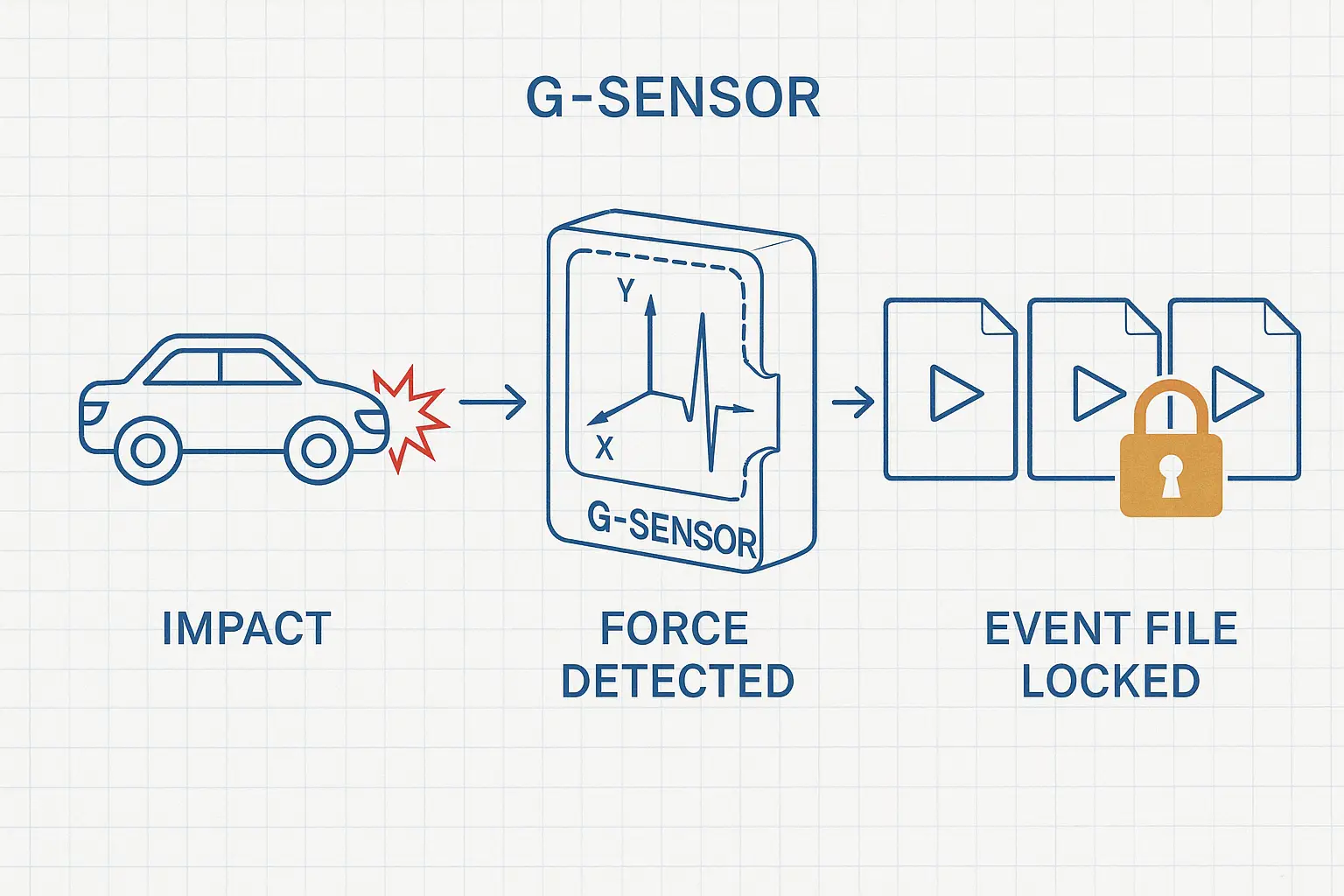
The G-sensor is the brain of the event-saving operation. Without it, a black box would just be a simple video recorder. The G-sensor gives it the intelligence to know what's important. It's the key that separates everyday driving footage from critical, unmissable evidence.
How the G-Sensor Detects an Incident
Inside the G-sensor is a micro-electro-mechanical system (MEMS) that measures forces on three axes: X (side-to-side), Y (front-to-back), and Z (up-and-down). When your car is cruising, the forces are relatively stable. A sudden jolt from a collision causes a spike in these readings. The black box's firmware is programmed to recognize this spike as an "event" and immediately secures the video file currently being recorded, along with often the preceding and following segments, into a protected folder on the memory card.
Calibrating G-Sensor Sensitivity
Most quality black boxes allow you to adjust the G-sensor's sensitivity. This is an absolutely critical step for any installer. I learned this the hard way on one of my first personal installations. I set the sensitivity to "High" and drove on my usual route, which includes some bumpy roads. By the end of the week, my memory card was almost full of locked files triggered by potholes. Setting the sensitivity too high creates false positives. Setting it too low risks missing a minor but legally important fender-bender. The best practice is to start with the "Medium" setting and adjust it based on the vehicle's suspension and the owner's typical driving environment.
| Sensitivity | Best For | Potential Issue |
|---|---|---|
| Low | Stiff suspension, rough roads. | May not trigger on minor impacts. |
| Medium | Most passenger vehicles, mixed driving. | A balanced starting point for calibration. |
| High | Smooth suspension, city driving. | Can be triggered by potholes or speed bumps. |
How Does the Black Box Protect Your Car When It's Parked?
Accidents do not only happen when you are driving. A hit-and-run in a parking lot can leave you with costly damage and no evidence to prove who was at fault. A good black box offers protection even when the car is off.
Parking mode uses the G-sensor, and sometimes motion detection, to monitor your vehicle when the ignition is off. If another car bumps into yours, the G-sensor detects the impact. This wakes the camera from a standby state, causing it to record for a short period and then lock that file as an event. This feature requires a constant power source, which is usually provided by a hardwire kit connected to the car's fuse box.
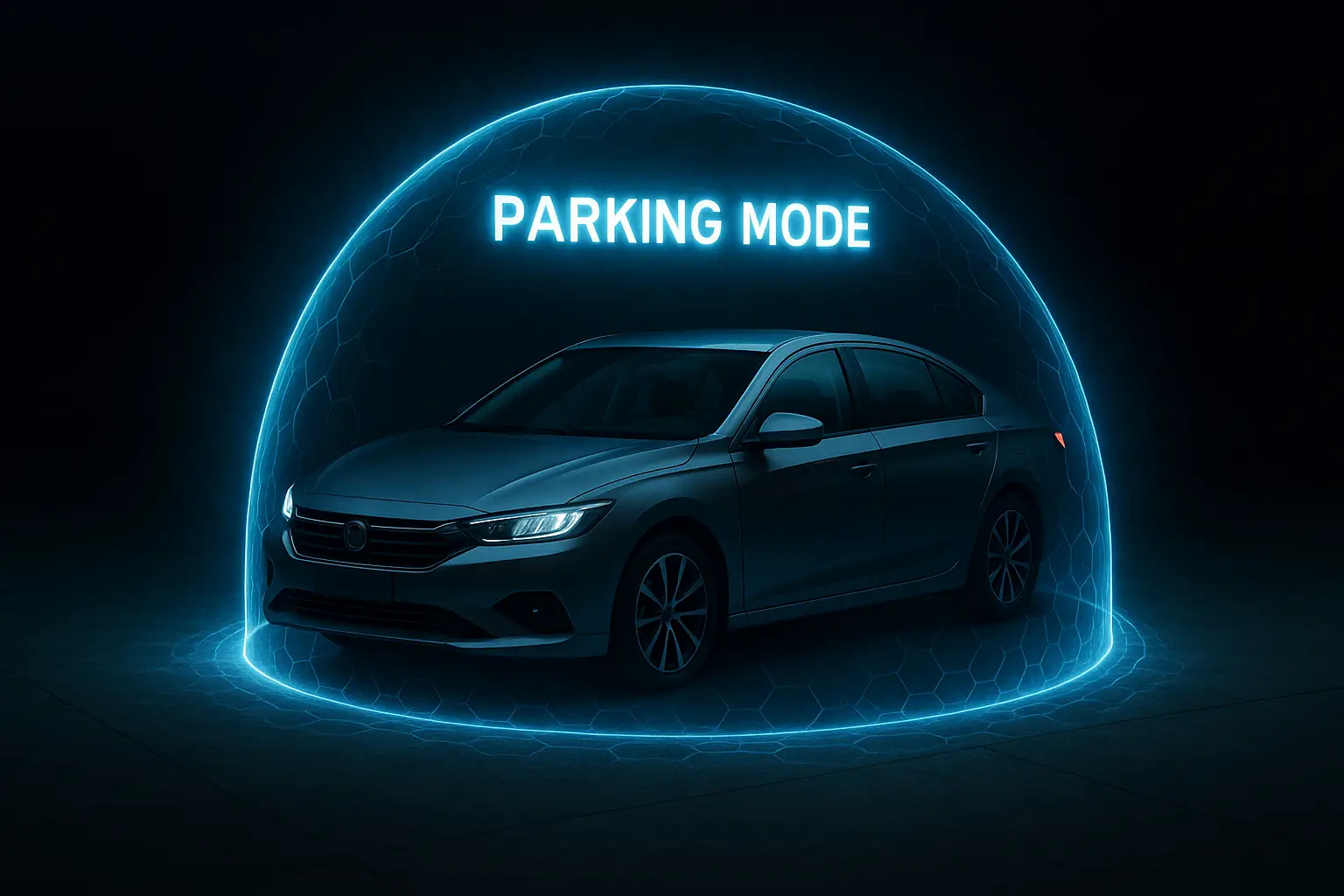
This 24/7 protection is what separates a basic dash cam from a comprehensive vehicle safety system. However, providing this protection introduces a new technical challenge: how to power the device without draining the car's main battery. This is where quality engineering really matters.
The Role of Hardwiring
To enable parking mode, the black box needs power even when the engine is off. The cigarette lighter socket usually turns off with the ignition, so it's not a viable option. The solution is a hardwire kit. As an electronics technician, I can tell you that this is the most professional and reliable installation method. The kit connects directly to your vehicle's fuse box, tapping into a "constant-on" circuit for power and an "accessory" circuit to know when the car is running.
Preventing Battery Drain
This is the most important part of a parking mode setup. A poorly designed system could easily drain your car battery, leaving you stranded. This is why at VST Tech, we focus heavily on intelligent power management3. Our hardwire kits include built-in voltage monitoring. You can set a cutoff voltage, for example, 12.0V. If the hardwire kit detects that the car's battery has dropped to this level, it will automatically cut power to the black box. This ensures your safety system never compromises your ability to start your car. It's a fundamental principle for us: a safety device should never create another safety problem.
| Power Source | Parking Mode | Battery Protection |
|---|---|---|
| Cigarette Lighter | Geen | N/A |
| OBD-II Connector | Yes | Sometimes, can be unreliable. |
| Hardwire Kit | Yes | Yes, with adjustable voltage cutoff. |
Conclusie
Your vehicle's black box is a simple yet powerful tool. Understanding how loop recording and G-sensors work together helps you trust that your journey is always protected, capturing what matters most.
-
Discover cutting-edge developments in automotive safety technology that can protect you on the road. ↩
-
Exploring how video segments work can help you appreciate their importance in ensuring data integrity and stability in recordings. ↩
-
Learn about intelligent power management to see how it prevents battery drain and enhances vehicle safety. ↩

